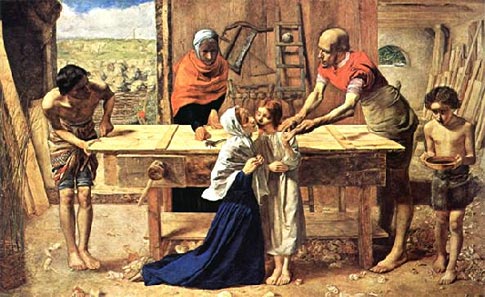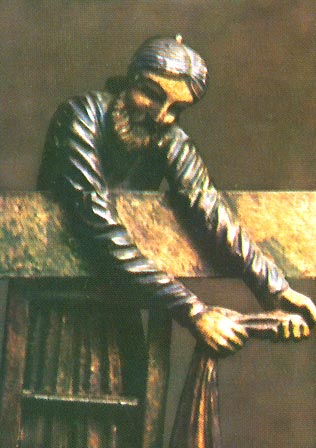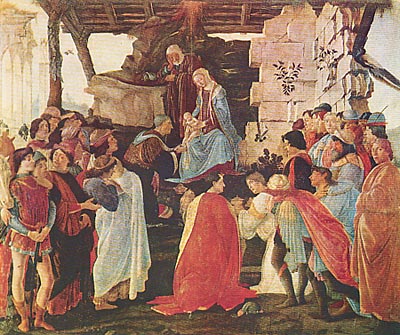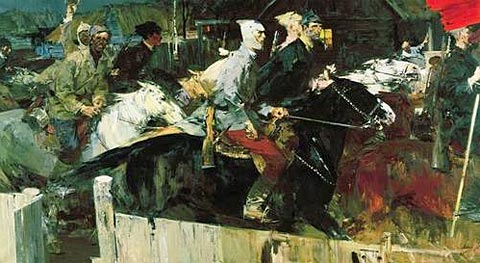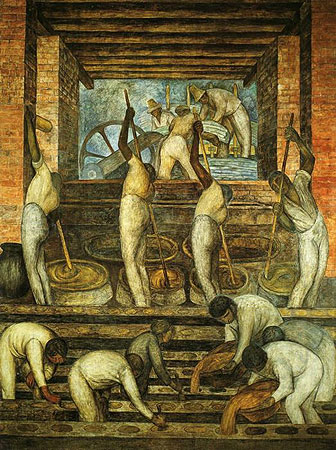Diego Rivera – the great Mexican painter
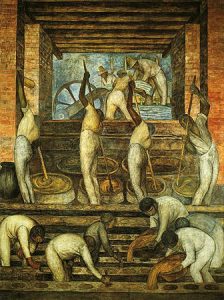 When the Great October Socialist Revolution took place in Russia, a revolutionary struggle was going on in Mexico for seven years. Armed peasants opposed the dictatorship of the rich and the priests, the landowners who seized fertile land, against the dominance of foreign capitalists. The war was unusually stubborn and cruel. The reactionary militia malice, American troops twice invaded Mexico. The bourgeoisie traitorously turned its weapons against the peasant detachments led by the popular leaders Francisco Villa and Emiliano Zapata. The rebels showed heroism and won great victories.
When the Great October Socialist Revolution took place in Russia, a revolutionary struggle was going on in Mexico for seven years. Armed peasants opposed the dictatorship of the rich and the priests, the landowners who seized fertile land, against the dominance of foreign capitalists. The war was unusually stubborn and cruel. The reactionary militia malice, American troops twice invaded Mexico. The bourgeoisie traitorously turned its weapons against the peasant detachments led by the popular leaders Francisco Villa and Emiliano Zapata. The rebels showed heroism and won great victories.
In February 1917, a constitution was adopted. Continue reading
James Whistler: “I am an artist and“ born ”in Petersburg”
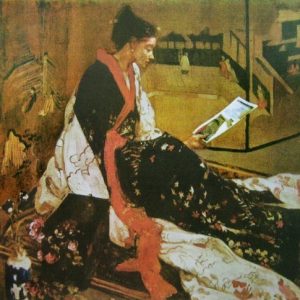 James Whistler, an Anglo-American artist, was born July 11, 1834 in Lowell, the industrial city of the United States. Staying in Russia largely affected the formation of his talent. Whistler arrived in St. Petersburg as a teenager in the fall of 1843, when his father, a railway engineer, was invited by the tsarist government to build a railway that was supposed to connect the two capitals.
James Whistler, an Anglo-American artist, was born July 11, 1834 in Lowell, the industrial city of the United States. Staying in Russia largely affected the formation of his talent. Whistler arrived in St. Petersburg as a teenager in the fall of 1843, when his father, a railway engineer, was invited by the tsarist government to build a railway that was supposed to connect the two capitals.
The years of childhood and adolescence, spent by the future artist in Russia, are the most cloudless and bright years in his full shocks of life. Continue reading
Giacomo Manzu – Coast of Truth
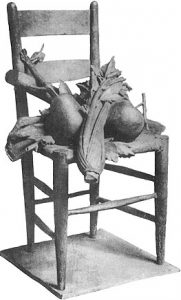 Creativity Mantsu is a surprisingly natural synthesis of truth, clarity of artistic ideas and originality of the visual image. His method is truly realistic, but this is realism, say, not of the 19th century, but of this century, including philosophical generalization and everyday narration, the elusively tender poetry of feelings and the visible objectivity of forms.
Creativity Mantsu is a surprisingly natural synthesis of truth, clarity of artistic ideas and originality of the visual image. His method is truly realistic, but this is realism, say, not of the 19th century, but of this century, including philosophical generalization and everyday narration, the elusively tender poetry of feelings and the visible objectivity of forms.
It is significant that everyone studying the art of Manzu sees in it and singles out for himself something special, the most exciting. In his work there are so many different facets that it equally strongly attracts even artists of opposite directions. Continue reading
Hubert Robert – “Painter of Ruins”
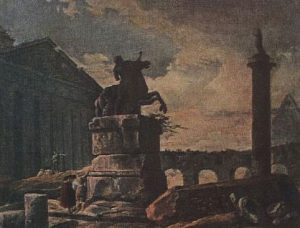 Antique ruins, then reflected in the calm waters, then almost hidden by thickets of climbing plants, shrubs. Peaceful rural nature, almost always clear sky. Through the gaps of trees make their way out the dying rays of the sun. Soft play of close colors, remarkable skill in depicting architecture, human figures, in the transfer of the finest natural states. Such is the collective image of painting by the French artist Hubert Robert.
Antique ruins, then reflected in the calm waters, then almost hidden by thickets of climbing plants, shrubs. Peaceful rural nature, almost always clear sky. Through the gaps of trees make their way out the dying rays of the sun. Soft play of close colors, remarkable skill in depicting architecture, human figures, in the transfer of the finest natural states. Such is the collective image of painting by the French artist Hubert Robert.
He was born in Paris in 1733. Nineteen year old boys began to attend the workshop of the sculptor Slodtts, who instilled in him a love of antiquity. Continue reading
Vincent van Gogh in Holland
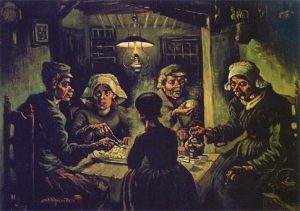 In 1879, when the epidemic of typhoid fever and fever in a multitude mowed people, Borinage’s miners marveled at the young lord, who fearlessly avoided the infected shacks, nursing the sick and maimed. This man was Vincent Van Gogh. Traveling over half of Europe, he ended up as a missionary at the coal mines. When the disaster at the mine was followed by a massive explosion of indignation of the miners, Vincent, their defender, entered into open conflict with the administration. “For almost two years,” he wrote bitterly about this to his brother, “I had to go through something in Borinage that did not look like a pleasure walk.” The unrest of the miners was suppressed, and the obstinate preacher was denied a seat. Continue reading
In 1879, when the epidemic of typhoid fever and fever in a multitude mowed people, Borinage’s miners marveled at the young lord, who fearlessly avoided the infected shacks, nursing the sick and maimed. This man was Vincent Van Gogh. Traveling over half of Europe, he ended up as a missionary at the coal mines. When the disaster at the mine was followed by a massive explosion of indignation of the miners, Vincent, their defender, entered into open conflict with the administration. “For almost two years,” he wrote bitterly about this to his brother, “I had to go through something in Borinage that did not look like a pleasure walk.” The unrest of the miners was suppressed, and the obstinate preacher was denied a seat. Continue reading
